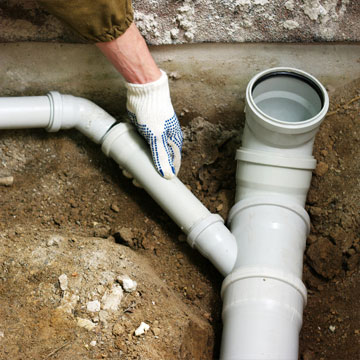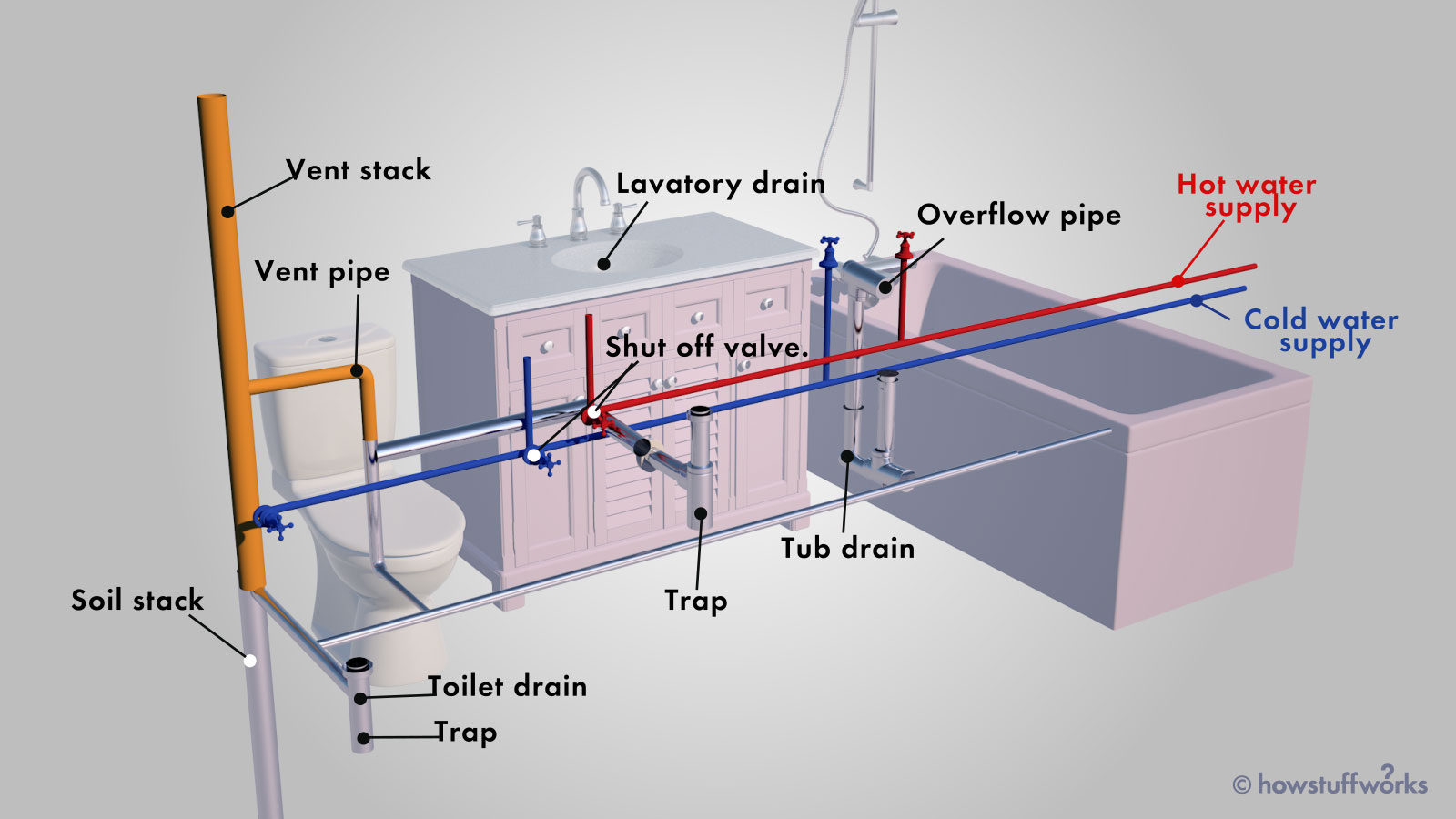Exploring Your House's Plumbing System Anatomy
Exploring Your House's Plumbing System Anatomy
Blog Article
In this article below you might get a good deal of professional advice all about Anatomy of a House: Understanding the Components.

Understanding exactly how your home's pipes system functions is crucial for every homeowner. From supplying clean water for alcohol consumption, food preparation, and showering to safely removing wastewater, a properly maintained pipes system is important for your family's wellness and convenience. In this extensive overview, we'll explore the detailed network that comprises your home's plumbing and deal tips on maintenance, upgrades, and handling usual problems.
Intro
Your home's plumbing system is greater than just a network of pipes; it's an intricate system that ensures you have accessibility to clean water and effective wastewater elimination. Knowing its components and how they collaborate can assist you protect against costly repair services and make certain whatever runs efficiently.
Standard Components of a Pipes System
Pipelines and Tubing
At the heart of your plumbing system are the pipelines and tubes that carry water throughout your home. These can be made from various products such as copper, PVC, or PEX, each with its advantages in regards to sturdiness and cost-effectiveness.
Components: Sinks, Toilets, Showers, etc.
Fixtures like sinks, toilets, showers, and bath tubs are where water is made use of in your home. Understanding how these fixtures connect to the pipes system assists in detecting problems and preparing upgrades.
Shutoffs and Shut-off Factors
Shutoffs control the flow of water in your plumbing system. Shut-off valves are critical during emergency situations or when you require to make repair work, permitting you to separate parts of the system without disrupting water circulation to the whole house.
Water System System
Key Water Line
The main water line links your home to the metropolitan supply of water or a personal well. It's where water enters your home and is dispersed to numerous components.
Water Meter and Pressure Regulator
The water meter steps your water usage, while a stress regulatory authority ensures that water flows at a risk-free stress throughout your home's pipes system, avoiding damages to pipelines and components.
Cold Water vs. Warm water Lines
Comprehending the distinction between cold water lines, which supply water directly from the primary, and hot water lines, which lug warmed water from the hot water heater, aids in repairing and preparing for upgrades.
Drain System
Drain Pipes Water Lines and Traps
Drain pipes bring wastewater away from sinks, showers, and toilets to the sewer or septic system. Catches stop sewer gases from entering your home and additionally catch debris that can create obstructions.
Air flow Pipes
Ventilation pipes allow air right into the water drainage system, stopping suction that might reduce water drainage and trigger traps to vacant. Correct air flow is vital for preserving the integrity of your pipes system.
Relevance of Appropriate Drain
Ensuring proper water drainage stops backups and water damages. On a regular basis cleaning drains pipes and preserving catches can stop expensive repairs and expand the life of your pipes system.
Water Heating Unit
Sorts Of Water Heaters
Water heaters can be tankless or conventional tank-style. Tankless heating systems heat water as needed, while storage tanks store warmed water for instant usage.
Exactly How Water Heaters Connect to the Pipes System
Understanding just how hot water heater connect to both the cold water supply and warm water distribution lines aids in identifying concerns like inadequate warm water or leakages.
Maintenance Tips for Water Heaters
Consistently flushing your water heater to get rid of sediment, examining the temperature level settings, and checking for leaks can expand its life expectancy and enhance energy efficiency.
Typical Pipes Problems
Leaks and Their Reasons
Leakages can take place because of aging pipelines, loose installations, or high water stress. Dealing with leakages without delay avoids water damages and mold growth.
Clogs and Clogs
Blockages in drains pipes and toilets are often brought on by flushing non-flushable products or a buildup of oil and hair. Utilizing drain screens and bearing in mind what decreases your drains pipes can avoid clogs.
Indicators of Pipes Issues to Watch For
Low tide pressure, sluggish drains pipes, foul odors, or unusually high water expenses are indications of possible plumbing issues that must be resolved promptly.
Pipes Maintenance Tips
Normal Inspections and Checks
Schedule yearly plumbing assessments to capture concerns early. Search for signs of leaks, rust, or mineral accumulation in taps and showerheads.
Do It Yourself Maintenance Tasks
Simple jobs like cleaning tap aerators, looking for bathroom leakages making use of dye tablets, or protecting revealed pipelines in cold climates can stop major plumbing problems.
When to Call a Specialist Plumbing Technician
Know when a pipes concern requires specialist know-how. Trying intricate fixings without correct understanding can result in more damage and higher repair work expenses.
Upgrading Your Plumbing System
Factors for Updating
Upgrading to water-efficient components or changing old pipelines can boost water top quality, lower water costs, and raise the worth of your home.
Modern Pipes Technologies and Their Advantages
Discover technologies like clever leak detectors, water-saving bathrooms, and energy-efficient water heaters that can conserve cash and decrease environmental effect.
Cost Considerations and ROI
Compute the ahead of time prices versus long-lasting savings when considering plumbing upgrades. Lots of upgrades spend for themselves through reduced utility bills and fewer fixings.
Ecological Impact and Preservation
Water-Saving Fixtures and Devices
Setting up low-flow faucets, showerheads, and commodes can significantly reduce water use without giving up efficiency.
Tips for Decreasing Water Use
Straightforward behaviors like dealing with leaks without delay, taking much shorter showers, and running full loads of washing and recipes can save water and lower your utility costs.
Eco-Friendly Pipes Options
Consider lasting pipes materials like bamboo for flooring, which is durable and green, or recycled glass for kitchen counters.
Emergency Readiness
Steps to Take During a Pipes Emergency
Know where your shut-off shutoffs are located and just how to shut off the water system in case of a burst pipe or significant leak.
Significance of Having Emergency Situation Get In Touches With Convenient
Maintain call information for local plumbings or emergency situation solutions conveniently offered for quick reaction during a pipes situation.
Do It Yourself Emergency Situation Fixes (When Applicable).
Short-term fixes like making use of duct tape to spot a leaking pipe or positioning a bucket under a leaking tap can decrease damage till a specialist plumbing gets here.
Conclusion.
Comprehending the composition of your home's pipes system empowers you to preserve it successfully, saving time and money on fixings. By complying with normal upkeep regimens and staying notified concerning contemporary pipes technologies, you can guarantee your pipes system operates efficiently for several years ahead.
HOW YOUR PLUMBING SYSTEM WORKS
Which Pipes Do What?
Blue lines = fresh water supply entering the building
Red lines = hot water supply entering the building
Grey lines = pipes carrying waste away from the building and venting pipes carrying gases away from the building (through the roof)
YOUR MAIN PLUMBING SYSTEMS
There are two main plumbing systems that support your home s basic plumbing needs one that brings clean water into your home, and one that sends dirty water away from your home. Connected to the toilet, bath, shower, and other faucets in your home, these two systems keep your water flowing in the right directions.
ACCESSING FRESH WATER
Fresh and clean water is brought into your home through the main water supply line . Filtered through one pipe, this water is pressured to flow into the various fixtures in your home at any given time.
This water can be sourced from a well located on your property, a pond or river (mostly cottages), or, as in most cases, from the city s municipal water treatment centre. However, it is important to note that water that is untreated, such as the water siphoned from ponds or rivers, may not be safe to drink. Personal water supplies always need to be treated for hardness and contaminants before consumed.
MUNICIPAL WATER SUPPLIES
Improve taste and odour
Remove sediment
Eliminate hardness
Reduce chlorine
COLD WATER SUPPLY VS. HOT WATER SUPPLY
Cold water flows into your home or building through the service line, which then distributes hot or cold water to your fixtures. This line is most commonly run through a central column that runs floor to floor. Hot water runs in short and straight pipes as the longer the pipeline, the more heat that will be lost in the transfer. Having shorter pipes also allows residents to access hot water more quickly.
WASTE WATER SYSTEM
Your wastewater system is divided into two parts pipes that send wastewater away from your home and venting pipes that send sewer gas away from your home. Sewage water travels through pipes that flush the water and waste towards local sewers that are operated and managed by your city or town. Most sewer systems rely on gravity to move the wastewater to where it needs to go.
The further away from your toilet or sink, the larger wastewater pipes become. This allows for waste to be disposed of from various parts of your home or business at once without pipe blockages. The angle and flow of these pipes are also essential for keeping your waste pipes clear of build up.
https://harrisplumbing.ca/how-your-home-plumbing-system-works/

HOW YOUR PLUMBING SYSTEM WORKS
Which Pipes Do What?
YOUR MAIN PLUMBING SYSTEMS
There are two main plumbing systems that support your home s basic plumbing needs one that brings clean water into your home, and one that sends dirty water away from your home. Connected to the toilet, bath, shower, and other faucets in your home, these two systems keep your water flowing in the right directions.
ACCESSING FRESH WATER
Fresh and clean water is brought into your home through the main water supply line . Filtered through one pipe, this water is pressured to flow into the various fixtures in your home at any given time.
This water can be sourced from a well located on your property, a pond or river (mostly cottages), or, as in most cases, from the city s municipal water treatment centre. However, it is important to note that water that is untreated, such as the water siphoned from ponds or rivers, may not be safe to drink. Personal water supplies always need to be treated for hardness and contaminants before consumed.
MUNICIPAL WATER SUPPLIES
COLD WATER SUPPLY VS. HOT WATER SUPPLY
Cold water flows into your home or building through the service line, which then distributes hot or cold water to your fixtures. This line is most commonly run through a central column that runs floor to floor. Hot water runs in short and straight pipes as the longer the pipeline, the more heat that will be lost in the transfer. Having shorter pipes also allows residents to access hot water more quickly.
WASTE WATER SYSTEM
Your wastewater system is divided into two parts pipes that send wastewater away from your home and venting pipes that send sewer gas away from your home. Sewage water travels through pipes that flush the water and waste towards local sewers that are operated and managed by your city or town. Most sewer systems rely on gravity to move the wastewater to where it needs to go.
The further away from your toilet or sink, the larger wastewater pipes become. This allows for waste to be disposed of from various parts of your home or business at once without pipe blockages. The angle and flow of these pipes are also essential for keeping your waste pipes clear of build up.
https://harrisplumbing.ca/how-your-home-plumbing-system-works/
As a serious person who reads about Anatomy of a House: Understanding the Components, I thought sharing that portion was really useful. You should take the opportunity to share this blog if you enjoyed reading it. Thank you so much for taking the time to read it.
Book Inspection Report this page